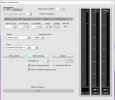- Joined
- Aug 5, 2021
- Messages
- 513
- Likes
- 543
I have been working on implementing Dirac on my nearfield desktop setup for the last week or so after my Minidsp flex arrived. I have not been able to find a Dirac profile that does not close down the vocals in particular. With slight tonal differences for different curves, the Dirac EQ reliably pushes the singer further back in the soundstage and thins it out. I am preferring by a significant margin an EQ export from REW actually.
I am using the focussed profile and tried tuning to a few different curves including the Harman.
Does anyone have any experience with this? Is Dirac always supposed to improve accuracy suggesting I am not calibrating it correctly or does it not necessarily work for all situations?
I am using the focussed profile and tried tuning to a few different curves including the Harman.
Does anyone have any experience with this? Is Dirac always supposed to improve accuracy suggesting I am not calibrating it correctly or does it not necessarily work for all situations?

